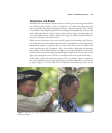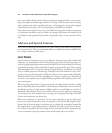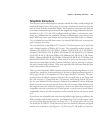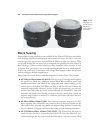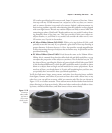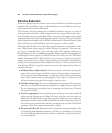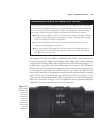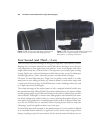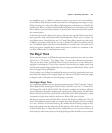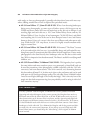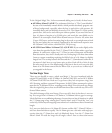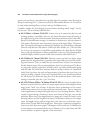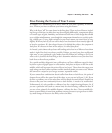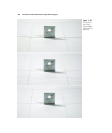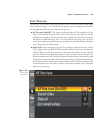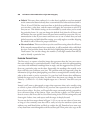you significant yen—or dollars, or whatever currency you use.) In its worst manifesta-
tions, sufferers find themselves with lenses that have overlapping zoom ranges or capa-
bilities, because one or the other offers a slight margin in performance or suitability for
specific tasks. When you find yourself already lusting after a new lens before you’ve really
had a chance to put your latest purchase to the test, you’ll know the disease has reached
the terminal phase.
In this final part of the chapter, I’m going to discuss some specific Nikon lenses that I
have experience with, and provide some recommendations. That’s not to say that I use
only Nikon lenses; I absolutely love my 10-17mm Tokina fisheye zoom lens, and could-
n’t afford a zoom that reaches all the way out to 500mm if I hadn’t been able to pick up
my 170-500mm Sigma zoom lens second-hand for an excellent price. But there are so
many lens options available that it makes more sense to confine my comments to the
true-blue Nikkors that I’ve had experience with.
The Magic Three
If you cruise the forums, you’ll find the same three lenses mentioned over and over, often
referred to as “The Trinity,” “The Magic Three,” or some other affectionate nickname.
They are the three lenses you’ll find in the kit of just about every serious Nikon pho-
tographer (including me). They’re fast, expensive, heavier than you might expect, and
provide such exquisite image quality that once you equip yourself with the Trinity, you’ll
never be happy with anything else.
Until, perhaps, now. Nikon has muddied the waters recently by introducing some new
lenses that have displaced the original magic trio. Moreover, D7000 owners just might
be happier with a triad-plus-one that I’m going to describe.
The Original Magic Three
For a significant number of years, the most commonly cited “ideal” lenses for “serious”
Nikon digital SLRs (meaning the D200, D300, and D2xs) were the 17-35mm f/2.8,
28-70mm f/2.8, and 70-200 f/2.8 VR. The trio share a number of attributes. All three
are non-DX lenses that (theoretically) work equally well on film cameras, the full-frame
Nikon D3/D3x and D700, as well as DX cameras like the D7000, making for a sound
investment in optics that could be used on any Nikon SLR, past or future.
All three incorporate internal Silent Wave motors and focus incredibly fast. They all
have f/2.8 maximum apertures that are constant; they don’t change as the lens is zoomed
in or out. All three are internal focusing (IF) models that don’t change length as they
focus, and include extra-low dispersion (ED) elements. And, all three are expensive, at
$1,400-$1,600. But, as I discovered when I added this set, once you have them, you
don’t need any other lenses unless you’re doing field sports like football or soccer, extreme
Chapter 11 ■ Working with Lenses 381



